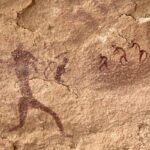We explain what prehistory is, and the periods and stages into which it is divided. Also, what prehistoric art was like and what history is.
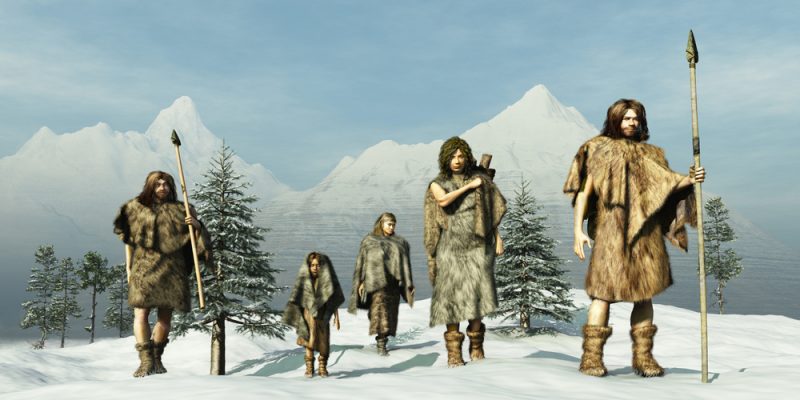
What is prehistory?
Prehistory is the period of time that includes since the appearance of the first hominids of the genus Homo that is, the human species ancestors of the Homo sapiens, until the appearance of the first complex or state societies characterized by the invention of writing, an event that first occurred in the Near East around the year 3300 BC. c.
However, from an academic point of view The concept of prehistory has been much discussed due to its inaccuracies since human beings did not appear at the same time in all places, nor did they invent writing at a single moment, so their chronological limits are very variable and sometimes arbitrary. The concept was also criticized for its bias, since it leads to thinking that history only begins with the emergence of cities and states, and that previous societies lack history.
In any case, prehistory can be considered more as a category to group together all those societies whose existence is prior to ancient history in the sense that they lack some characteristics that are usually recognized as typical of the so-called historical civilizations, which in general terms are:
- A complex and hierarchical form of social organization, with state-type administrative and political structures and some type of long-distance economic exchange.
- A capacity for substantial modification of its habitat to make it more favorable, which causes an important transformation of the landscape.
- An agglomeration of the population in cities and a registration system based largely on writing.
The appearance of writing is usually recognized as the starting point of history and the methods to study prehistoric societies usually come from archeology (since there are no written documents). However, the moment that marks the end of prehistory and the beginning of history is a matter of debate. This is because very ancient state political entities, such as the Inca Empire in America or Great Zimbabwe and the Ghana Empire in Africa, used to be considered part of prehistory because they did not have a writing system, but their ways of life urban and complex were more characteristic of what we usually call ancient history.
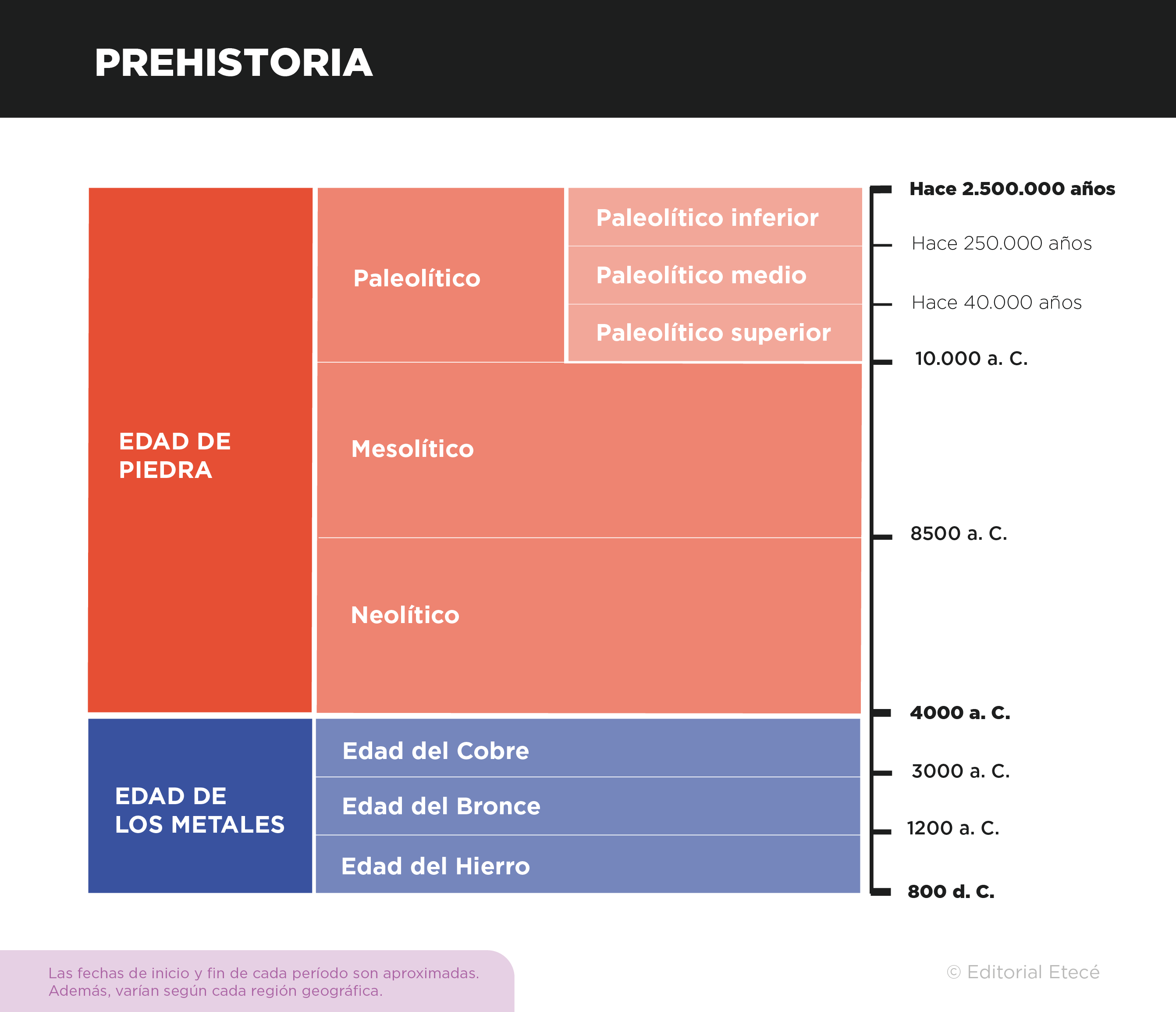
Key points
- Prehistory is the period of time from the birth of the Homo genus to the emergence of States and the invention of writing.
- It is usually divided into two major ages: Stone Age and Metal Age (although the latter usually connects with the historical stage).
- Prehistory was characterized by the development of technology (tools and weapons) for hunting and gathering, fishing, agriculture and other activities.
- During prehistory, rock art, the manufacture of figurines and ceramics, and the establishment of sedentary settlements and cemeteries stood out.
Periods and stages of prehistory
Prehistory is divided into periods that, despite a certain chronological imprecision and geographical variety, are considered progressive stages in the transformation of human capabilities to work with materials, manufacture tools and organize forms of subsistence and social life. Thus, we usually talk about two great ages:
Stone Age
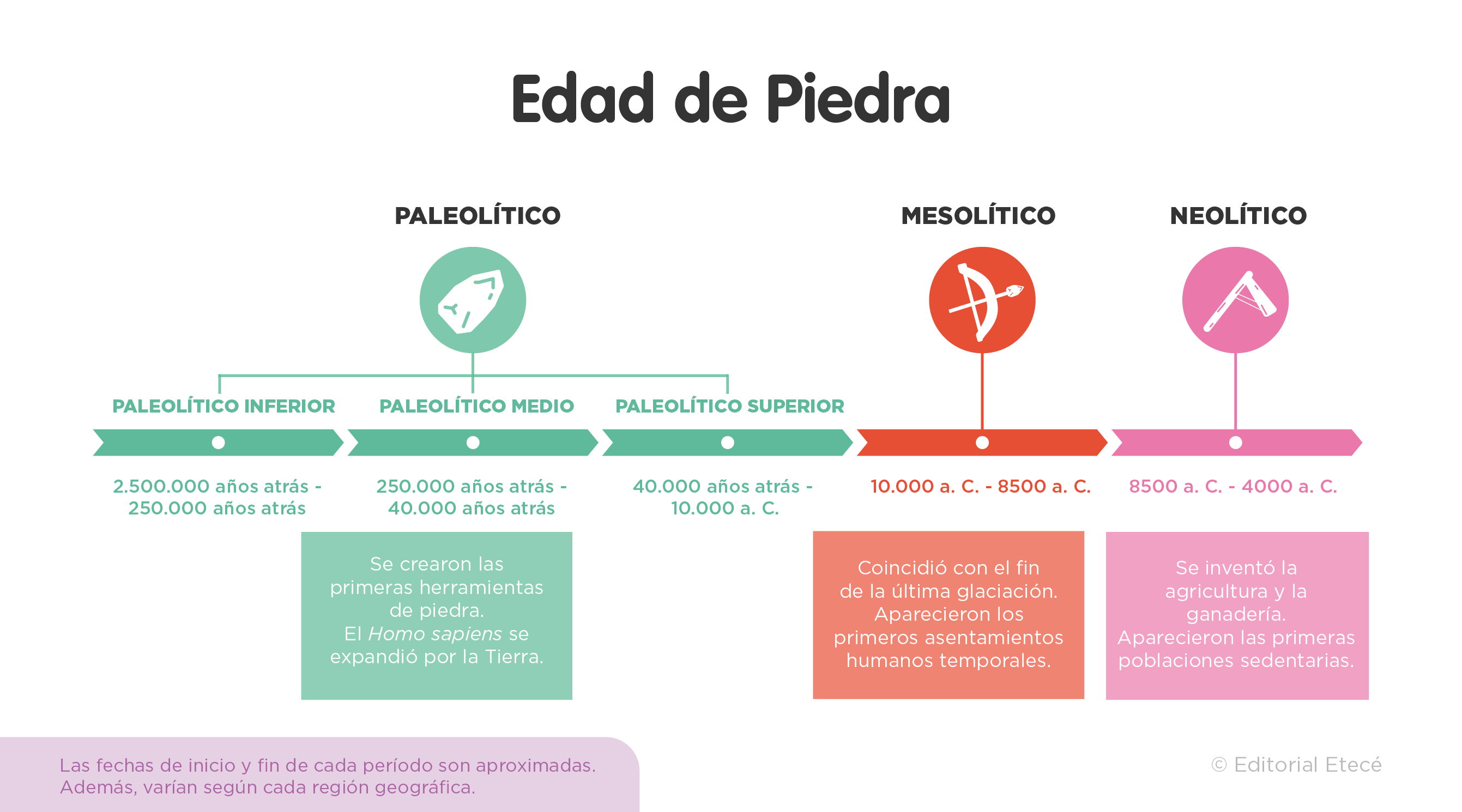
The Stone Age was the stage during which humans mostly manufactured and used tools made of stone, wood, bone and other simple materials. This stage in turn includes three periods:
- Paleolithic. It was the longest period of the Stone Age, which began with the creation of the first stone tools created by hominids. In this period there were species of the genus Homo prior to Homo sapienslike the Homo habilisand others that came to coexist with the Homo sapienslike the Homo erectus and the Homo neanderthalensis. These species were mainly hunter-gatherers. At the end of this period, the Homo sapiens spread across the Earth.
- Mesolithic. It corresponds more or less to the end of the last ice age, that is, it was a period in which the warming of the Earth began, forcing human beings to adapt to climatic and geographical changes. Humanity remained essentially nomadic, although towards the end of the period the first temporary settlements appeared, and with them the first simple cemeteries.
- Neolithic. During this period a true technological revolution occurred, starting with the invention of agriculture and livestock. Animal husbandry, the cultivation of cereals and legumes, and the exchange of products between communities represented a substantial change, which included the appearance of the first sedentary populations.
Metal Age
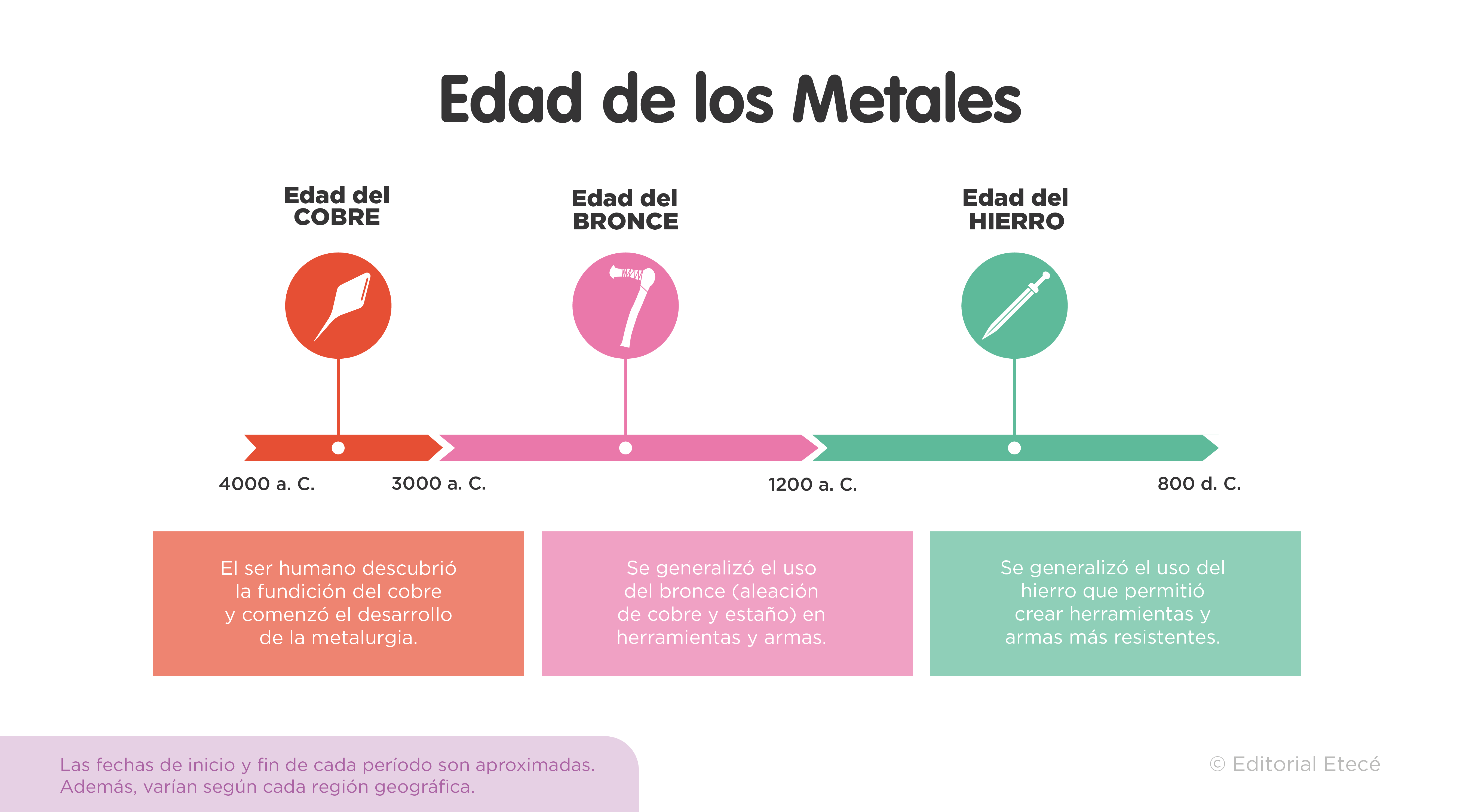
The Age of Metals was a stage in which humans developed metallurgy, which allowed them to make tools with metals that were more resistant and versatile. This age corresponded in some regions to prehistory and in others to the emergence of the first state civilizations that marked the beginning of history according to traditional terminology. It is divided into:
- Copper Age. Copper was the first metal used by humanity, first raw and then melted, which gave birth to metallurgy. It allowed the creation of cutting and versatile tools, and gave its name to this period, which was also called Chalcolithic and was documented in some regions of the Near East, Africa and Europe.
- Bronze Age. The knowledge of copper allowed its mixture (alloy) with tin and thus bronze was born, which marked a milestone in the history of the manufacture of weapons, shields, ornamental objects, tools, among others. Glass was also discovered in this period. The beginning of this stage coincided in some regions with the emergence of large state organizations, such as the Pharaonic State in Egypt and the Sumerian city-states in Mesopotamia.
- Iron Age. Some of the major ancient civilizations had already appeared when the Iron Age began, and their mastery of this metal demanded and encouraged new techniques and new metallurgical methods. Iron was abundant and, once worked, made it possible to make stronger and more efficient tools and weapons, which had an important influence on war. Although its beginning occurred in the Near East and southeastern Europe around 1200 BC. C., the popularization and expansion of the use of iron began a few centuries later. Later, the Roman Empire perfected the techniques for obtaining and using iron.
prehistoric art

During prehistory, the first forms of art or subjective expression of humanity occurred, generally consisting of rock paintings or engravings on cave walls for which different substances were used: blood, animal fat, charcoal and certain mineral pigments. Mostly this primitive art consisted of silhouettes of hands, spots, geometric motifs, and representations of animals and humans in hunting scenes or other activities.
Subsequently, began to practice sculpture initially in stone and later in other materials such as ceramics and metals. In some regions, The production of ceramic containers also served as a support for the representation of images both figurative and abstract. At different times in prehistory, ceremonial and religious objects were common, such as the Paleolithic figurines known as Venus and others of human and animal figures.
It is also considered that the composition of the first oral stories began in prehistory, transmitted from generation to generation, probably with mythical or religious content.
The story
History, as opposed to prehistory, refers to the events carried out by humanity since the invention of writing that is, since the emergence of a graphic system of signs.
Furthermore, the term history designates the field of study within the social sciences or human sciences that is dedicated to the study of the past of human societies. Specialists in this discipline are called historians.
See also:
References
- Braidwood, R.J. et al. (2023). Stone Age. Encyclopedia Britannica. https://www.britannica.com/
- Fernández Martínez, VM (2007). Prehistory. The long road of humanity. Alliance.
- Violatti, C. (2014). Stone Age. World History Encyclopedia. https://www.worldhistory.org/




